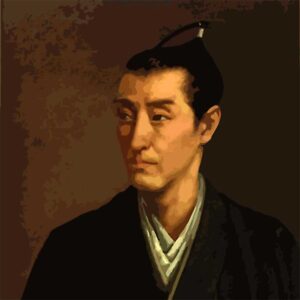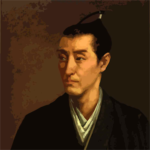
Hiraga Gennai was born in Shidoura, Sanuki Province (Shido-machi, Okawa County, Kagawa Prefecture), in 1728 (Kyoho 13), and died in 1779 (An’ei 8). A native of Shidoura, Sanuki Province (Shido-cho, Okawa County, Kagawa Prefecture), he was born in 1728 (Kyoho 13) and died in 1779 (An’ei 8), aged 51. He was a herbalist and author of many books of caricatures. He was also interested in pottery and mastered the technique of koji-yaki in Nagasaki during the Horeki era (1751-64). Gengo and Akamatsu Matsuyama, his nephews, passed on the technique to Gengo and Akamatsu Matsuyama. In May 1771, he submitted a proposal to Ibi Jutayu, the deputy governor of the time, to establish a pottery business in Fukae, Amakusa County, Higo Province (Kumamoto Prefecture), using materials produced there, and to greatly promote domestic industry. Although this plan never came to fruition, Gennai’s letter to his son-in-law Gontayu from Edo (Tokyo), which reads, “I have sent Gengo to Nagasaki to make pottery in Nagasaki and to go to Alandra, Tang China, to talk to the government officials about the possibility of using Japanese clay to obtain gold from Alandra,” indicates that this was a plan ahead of its time. In his book “Mono Ruishintai,” the clay section includes a description of the clay used for ceramics (see “History of Japanese Ceramics and Porcelain”). (Nihon china shishi ron, Sanuki china shishi kan [History of Japanese Ceramics, History of Sanuki Ceramics])








